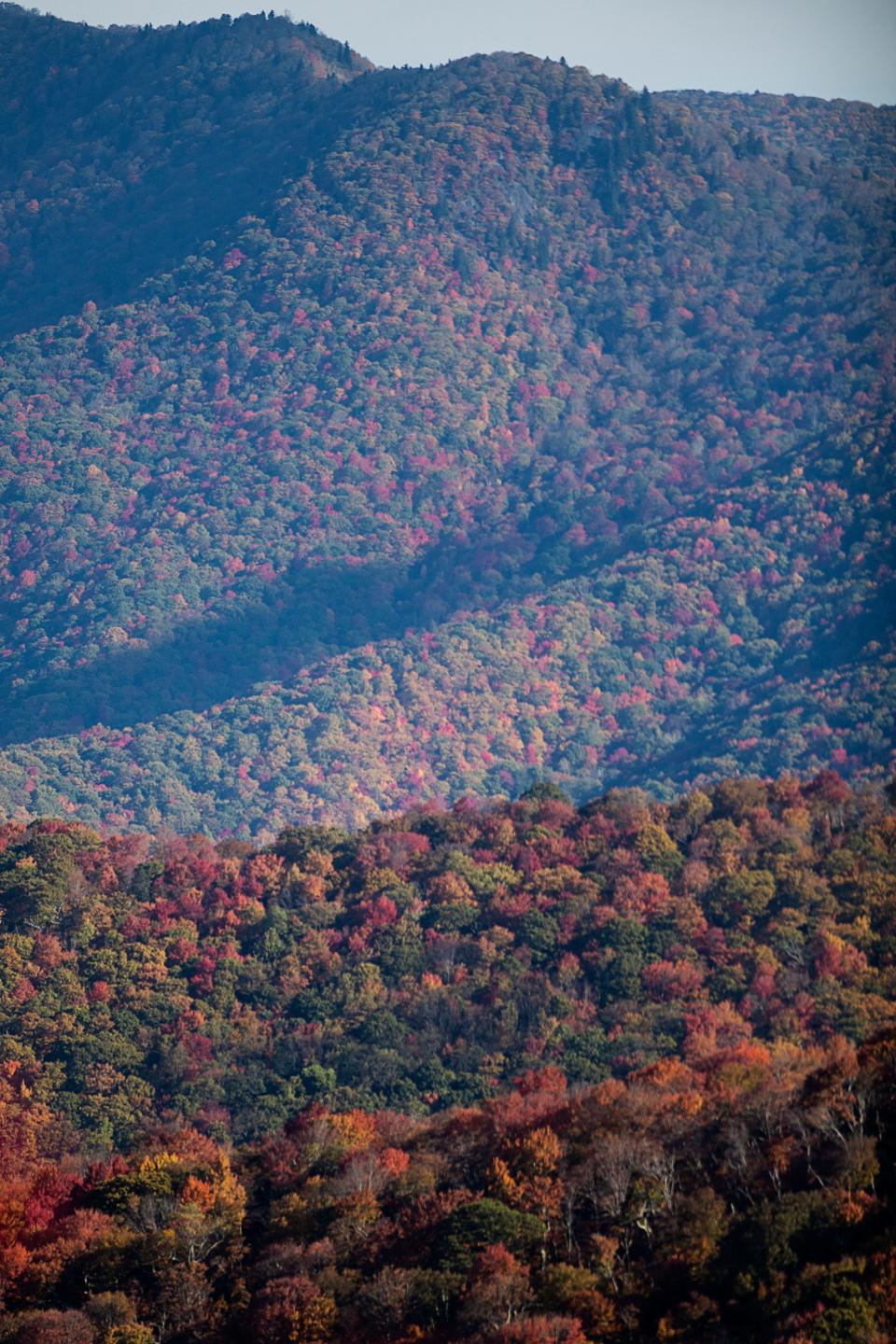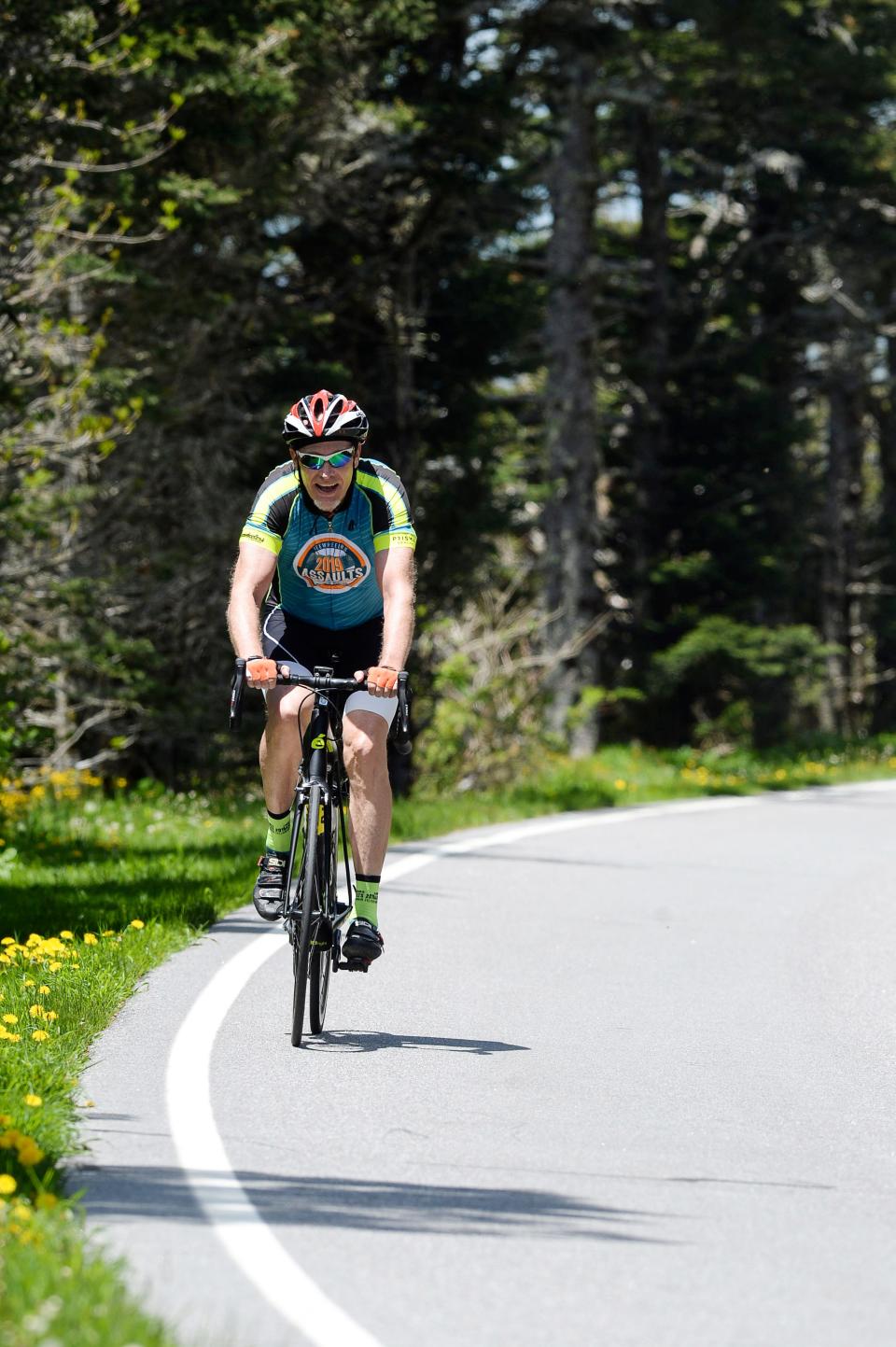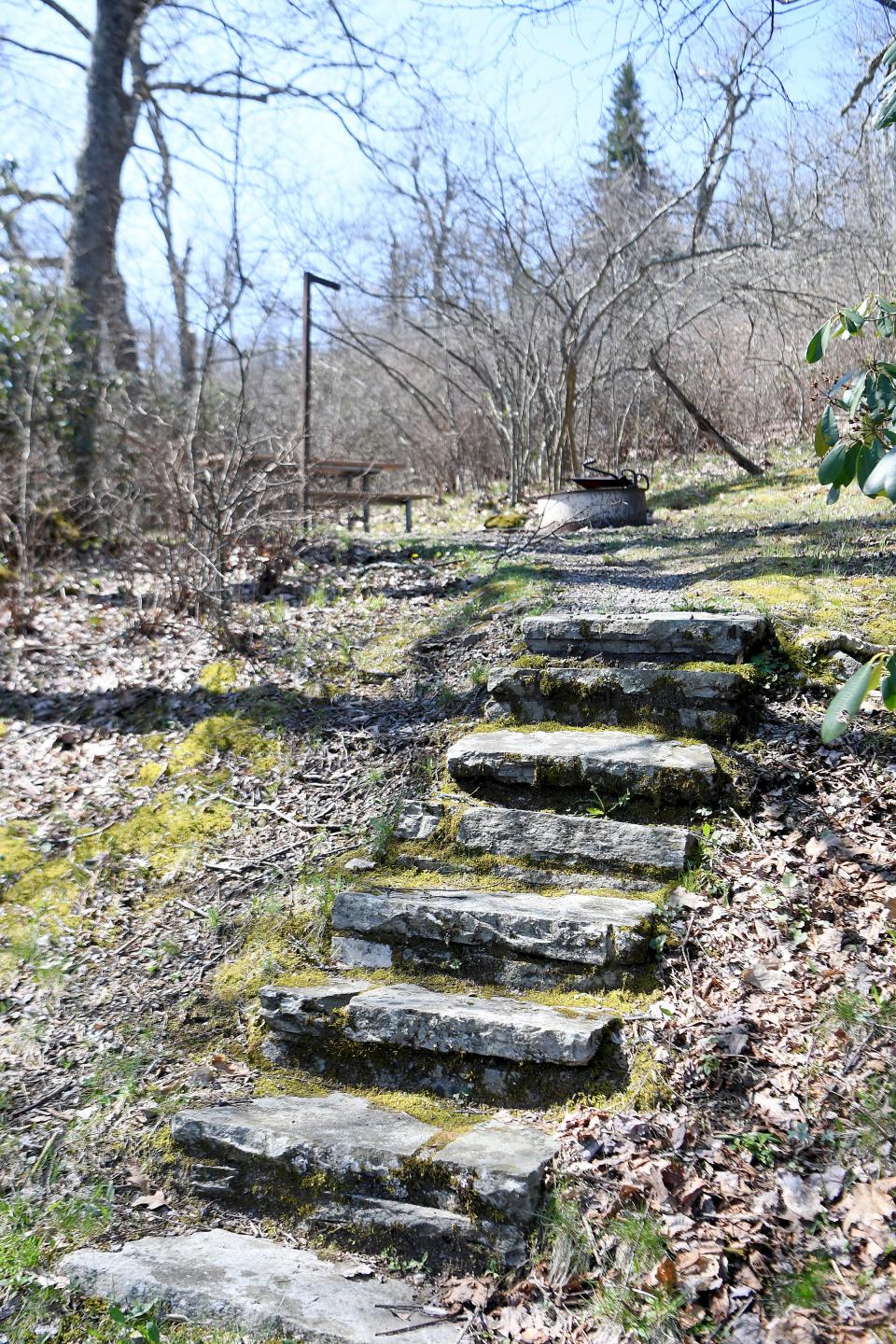Should Blue Ridge Parkway have National Historic Landmark designation? What to know.
Sen. Ted Budd (R-N.C.) has sent a letter to the National Park Service expressing "strong support for designating the Blue Ridge Parkway as a National Historic Landmark".
Budd said in a news release that the parkway is rich in natural beauty and important history. He also mentioned the economic benefits to Western North Carolina that the parkway has brought since the beginning of its construction in 1935. Since 1946, The Blue Ridge Parkway has become the most frequently visited site within the national park system.
In 2023, about 16.7 million people visited the parkway, about a million more than the previous year. In 2022, visitors spent nearly $1.3 billion in and around the communities near the parkway. Budd said that this revenue helps to support thousands of jobs and "keep Appalachia alive."
Read more about the Blue Ridge Parkway below.

More: NC Blue Ridge Parkway specialty plates raise half-million dollars; How can you get a tag?
Where is the Blue Ridge Parkway?
Sprawled across 469 miles of Appalachian Highlands, the Blue Ridge Parkway runs from the Virginia through to the Great Smoky Mountain National Park in North Carolina.
According to the NPS, the parkway passes through six mountain chains in the Appalachians. The first 355 miles follow the Blue Ridge Mountains. Near Asheville, the parkway winds through the Black Mountains, the Craggies, the Pigsahs and the Balsams, ending at the Great Smokies.
More: Why Blue Ridge Parkway, Great Smokies rank high on list of deadliest national park sites
Where is the start of the Blue Ridge Parkway?
The beginning of the parkway is located in Shenandoah National Park near Waynesboro, Virginia (Milepost 0). The parkway ends in the Great Smoky Mountains National Park, near Cherokee, North Carolina (Milepost 469).
What is the elevation of the Blue Ridge Parkway?
According to the NPS, the highest elevation on the Blue Ridge Parkway – and the entire Appalachian Mountain Range – is Mount Mitchell at 6,683 feet. Mount Mitchell is also the highest point east of the Mississippi River.
The highest elevation along the parkway road itself is 6,053 feet. This point is also located in N.C. at Richland Balsam.
Things to do on the Blue Ridge Parkway
A few of the many scenic sites along the parkway included in Budd's news release included Craggy Gardens, Mount Mitchell, Graveyard Fields, Black Balsam, Grandfather Mountain and Devil’s Courthouse.
"This historic landmark’s distinction cannot be replicated anywhere else in the United States or the world," Budd said in the release.
The NPS website includes information on some of the most popular activities and areas on the parkway. A few of their suggestions include:
Hiking - There are 369 miles of hiking trails on the parkway. Some of the many popular options include Crabtree Falls, Craggy Gardens and Mount Pisgah.
Music - Enjoy music events and concerts at several locations on the parkway throughout the year. The Blue Ridge Music Center at Milepost 213 celebrates the music and musicians of the Blue Ridge at its outdoor amphitheater and indoor interpretive center/theater. Go to the Blue Ridge Music Center concert schedule at www.blueridgemusiccenter.org to find out who is playing.
Picnicking - There are 14 designated picnic areas located along the parkway. These areas have restrooms available and allow the use of camping stoves and self-contained charcoal grills. Many overlooks also have tables for picnicking. Picnic areas are generally open daily from sunrise until sunset, mid-spring through fall.

More: Word from the Smokies: Spring's grand performance is prime time for birdwatchers
Blue Ridge Parkway campsites
Planning a trip to the Blue Ridge Parkway? Whether you're driving or backpacking, the parkway contains a variety of campsites to suit your preferences.
There are eight developed campgrounds on the parkway, each open from May through late October. These campgrounds have potable water, comfort stations with flush toilets and sinks and a dump station for recreational vehicles. Each camp site also includes a picnic table and fire ring.
Developed campsites are available on a first-come, first-served basis for $20 a night. Advance reservations can also be made up to six months in advance by visiting www.recreation.gov or by calling 877-444-6777.
There are three backcountry or "primitive" campsites on the parkway. These sites require permits to access, which are only issued to groups of under 18 people, with no more than six people per campsite. Permits are not issued for more than three consecutive nights. Backcountry campsites include:
Rock Castle Gorge near Rocky Knob (MP 167.1)
Basin Cove near Doughton Park (MP 239.2)
Johns River Road near Julian Price Park (MP 296.9)
For a full list of parkway campsites and important information, visit the NPS webpage.

More: How much are Blue Ridge Parkway camping fees? Rates might increase at some spots
What is a National Historic Landmark?
The NPS website explains that National Historic Landmarks are "buildings, sites, districts, structures, and objects that have been determined by the Secretary of the Interior to be nationally significant in American history and culture."
These sites receive federal funding allocated to their preservation, among other benefits. A few famous landmarks listed by the NPS include:
Mount Vernon
Pearl Harbor
The Apollo Mission Control Center
Alcatraz
Martin Luther King Jr.'s Birthplace
Landmarks are selected through studies undertaken by the NPS, which analyze the historical value of nominated properties. The NPS and National Park System Advisory Board evaluate findings twice yearly public meetings, and make recommendations to the Secretary of the Interior, who makes the final decision on designation for these potential landmarks.
Iris Seaton is the trending news reporter for the Asheville Citizen Times, part of the USA TODAY Network. Reach her at [email protected].
This article originally appeared on Asheville Citizen Times: Blue Ridge Parkway may be designated as a National Historic Landmark
